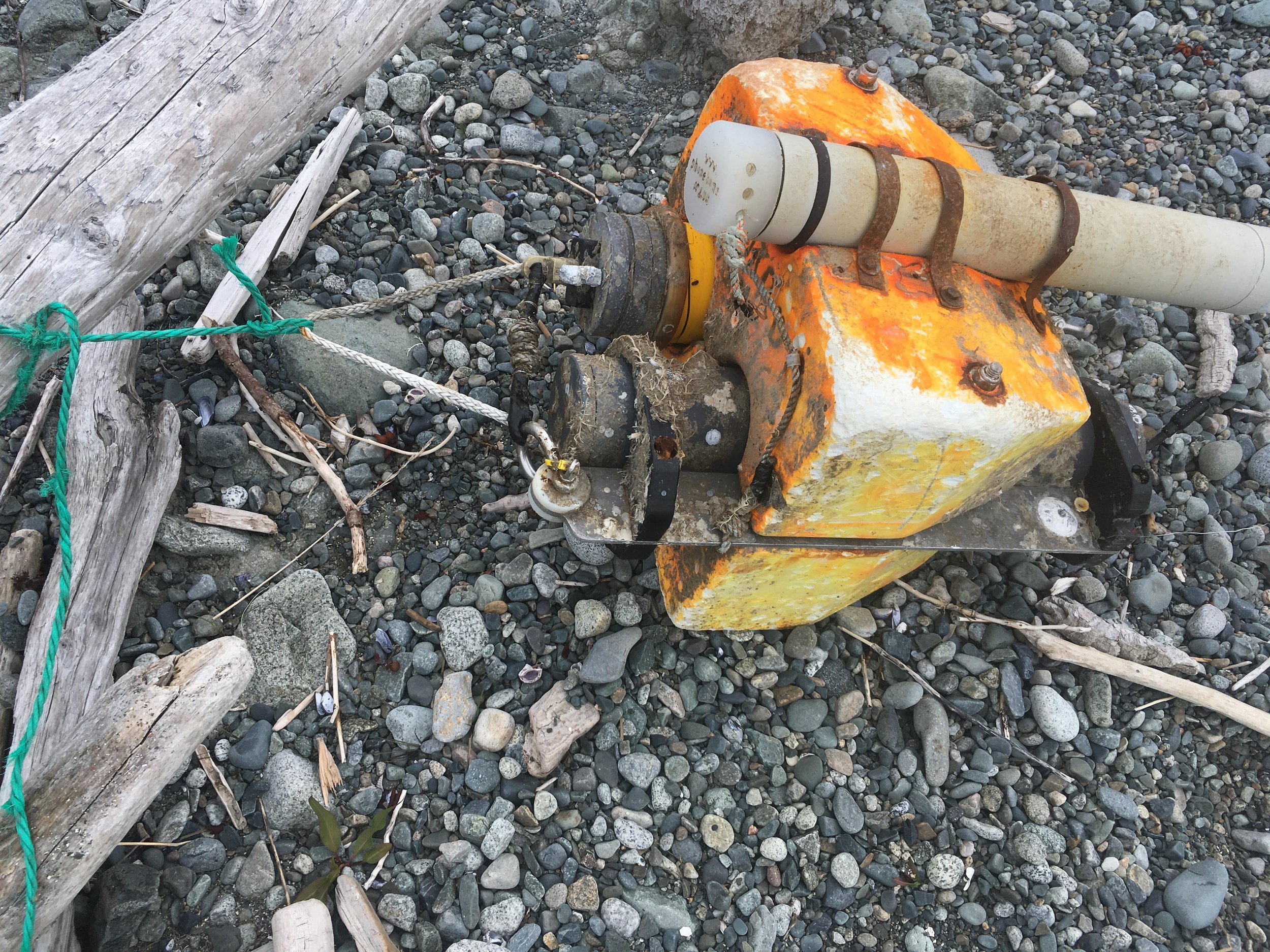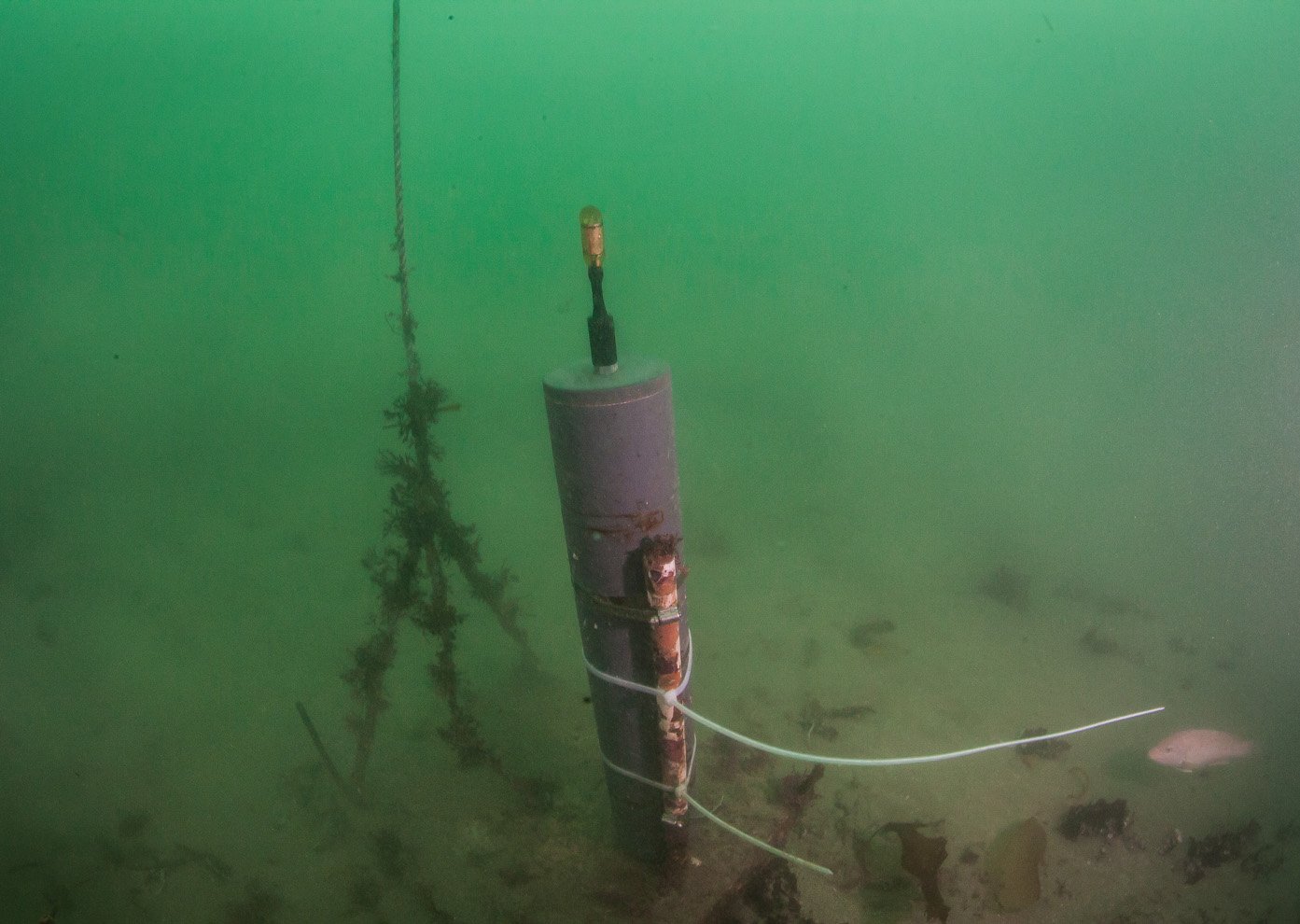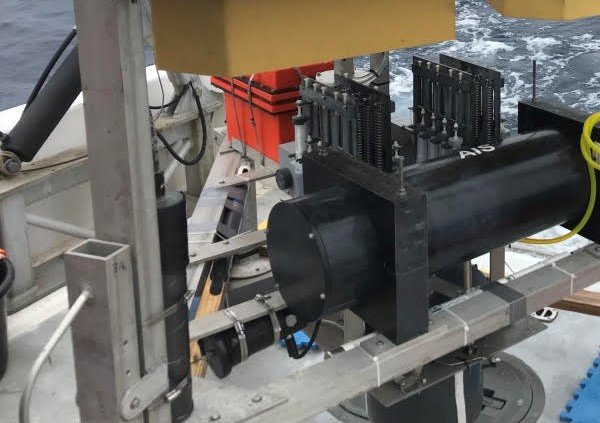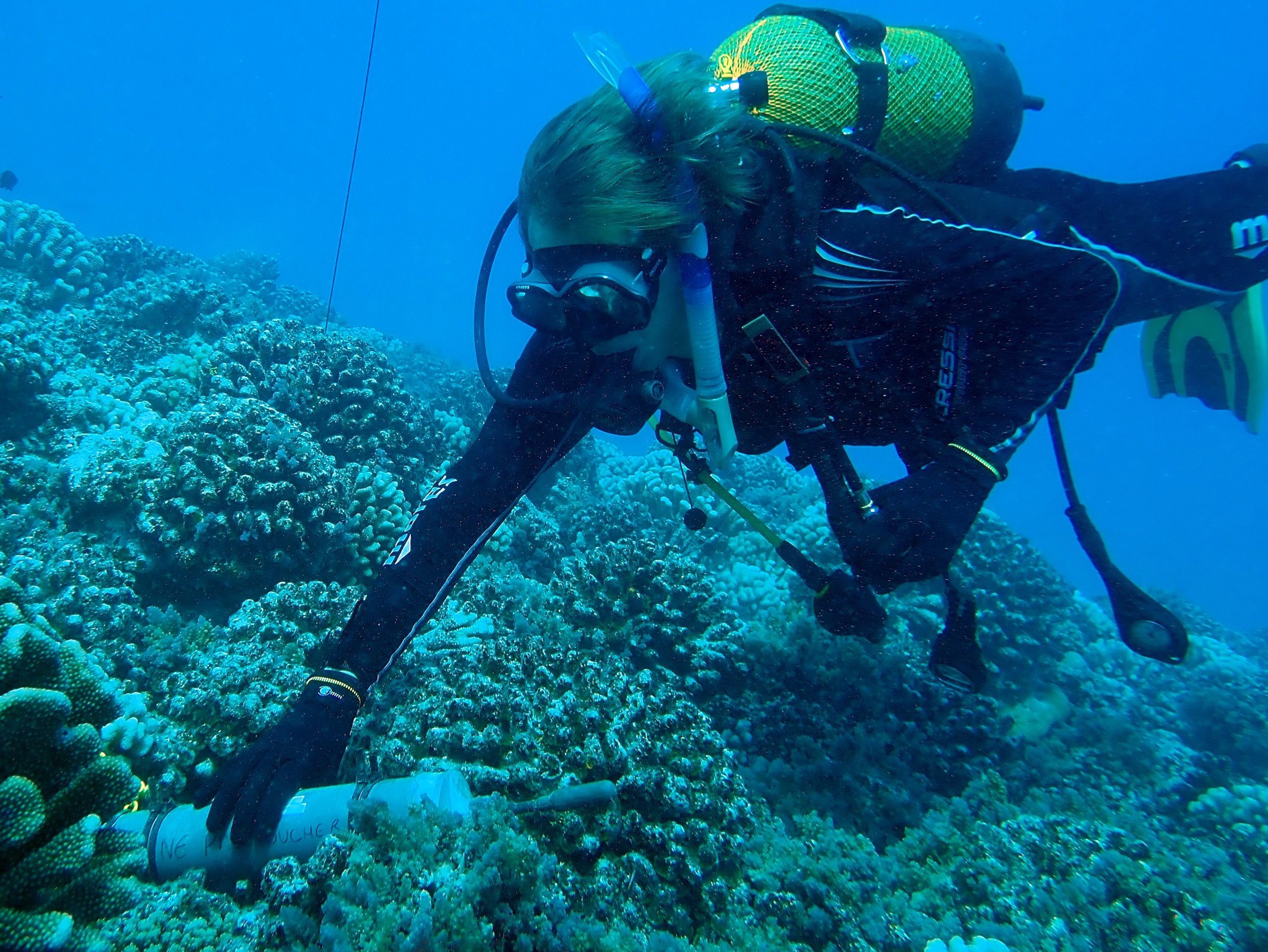
Cook Inlet Survivor
In 2017, this Loggerhead Instruments datalogger (DSG-ST purchased in 2014) was deployed in a remote location in Cook Inlet, Alaska but could not be recovered during attempts in 2017, 2018 and 2019.
It was found onshore by a fisherman in late September, 2022 with two years and eight months of data, a record for this research group, the Cook Inlet Beluga Acoustics Program (CIBA) by the Marine Mammal Laboratory at the NMFS Alaska Fisheries Science Center, in partnership with the Alaska Department of Fish and Game. In spite of its many dents and a destroyed hydrophone, "it did not leak a drop, and best of all, it recorded until April 2020. It stopped due to a full 512 GB memory card while the mooring was still deployed."
"I think this proves your recorders are rock solid, and your housings are the best out there. The mooring package went through hell while rolling on rocks."

Loggerhead Products Enable Research
Loggerhead Instruments' products, including the LS1 and Snap, are used in the world's oceans, lakes and rivers to acoustically monitor and study aquatic life. A sample of recent publications highlights some of these discoveries:

Blue Hole Research: Snap recorder in the field
Blue holes are large, deep, and often hard to study marine caverns or sinkholes. A team of researchers from Florida Atlantic University's Harbor Branch Oceanographic Institute, Mote Marine Laboratory and Aquarium, Georgia Tech, and the United States Geological Survey (USGS) is conducting a three-year study to explore blue holes in the Gulf of Mexico using a maneuverable, autonomous, benthic lander. Initial findings suggest that the Amberjack Hole is anoxic with a sulfidic bottom and is devoid of life, while the Green Banana hole, located almost 50 miles offshore, exhibits signs of life. The team hopes to learn whether this blue hole is connected to the Floridan aquifer system (see this video for more project info).
Attached to the lander frame, Loggerhead's Snap recorder is capturing audio from the blue hole. These acoustic data will be analyzed to learn more about blue hole ecosystems and soundscapes and whether the water's chemical composition, including salinity, dissolved oxygen, or other compounds, may impact soniferous organisms. While water sampling is limited to daylight hours, the Snap will record sound even at night when the blue hole seems particularly active.

Coral Reef Acoustics: Using sound to study tropical waters
Coral reefs are hot spots of biodiversity and are an acoustically rich and varied environment. Fishes and benthic invertebrates, such as snapping shrimp, produce sounds during courtship and reproduction as well as incidental sounds during feeding. Rain and boats also can be heard underwater.
Researchers at the University of Liege, Belgium use these sounds to characterize coral reefs and study how habitats change with depth and other environmental features. They seek to understand how larvae living in the open ocean use sound to locate reefs where they will live as juveniles and adult fish. Loggerhead equipment is critical for documenting these soundscapes.